50 lbs. of moon rocks. That’s how much weight was allocated for the Apollo 11 astronauts to bring back lunar samples to Earth. But this would be the first time materials from another world would be brought to our planet. What should be done with these alien rocks, and could they possibly be a threat to life as we know it?
What started out as a seemingly straightforward idea of building a facility to store and study rocks from the Moon ended up becoming a power struggle between engineers building the facility and scientists who wanted to study the rocks and those who wanted to save the world from biological disaster — not to mention even more squabbling between the various governmental agencies and politicians. In the middle of it all was James McLane, Jr. one of the engineers tasked with the early planning for the Manned Spaceflight Center –now known as Johnson Space Center in Houston — and in particular, he led a group to determine the requirements and design concept of NASA’s Lunar Receiving Laboratory.
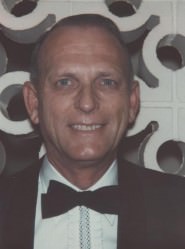
“We started the Manned Spaceflight Center from scratch and a cadre of people envisioned what we should have for the space program’s ground facilities,” said McLane, in an interview from his home with Universe Today. “A whole range of facilities were recommended. For a year or so I went from one design review to another to add my two bits as to how things might be done. The new facilities included a big manned centrifuge, electronics labs, and a thermal vacuum lab with a couple of very big space simulation chambers to test the Apollo spacecraft and its onboard crew under conditions similar to those to be found during the lunar missions. There was just about everything you could think of that was needed to support the Apollo program.”
While engineers at the MSC were intent on designing unique, world-class facilities (as well as rockets and spacecraft to take humans to the moon) scientists were excited about the prospect of researching pristine lunar materials.
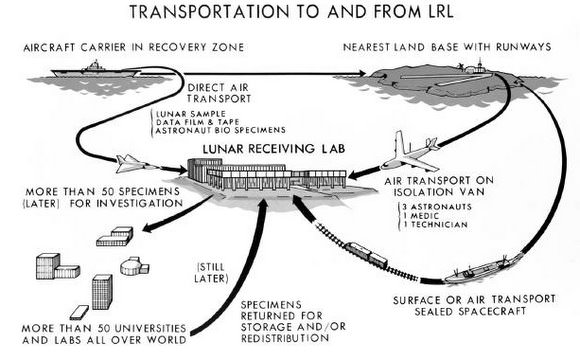
During this time, a couple of young MSC scientists, chemist Don Flory and geologist Elbert King had been given responsibility of designing the airtight sample return containers in which lunar samples would be brought back to Earth. But, said McLane, no one had given much thought as to how the rocks should be handled or stored once they were brought back to Earth. “There really wasn’t much direction on what should be done after we got them back to Earth,” he said. “Oh, there were scientific committees of course, but for some reason this was down low on their priority list. I think they were thinking more about the research they were going to do with the rocks.”
But one day Flory and King showed up in their boss’s office and said since they had the responsibility for the container they were a little concerned what would be done with it after the astronauts returned the samples. They suggested that, at least, the containers ought to be opened in a vacuum chamber.
“They asked, ‘Does anyone around the Center have a small vacuum chamber where we can open these boxes?’ And that started the whole business of what would happen to the lunar samples and what was required to do that,” said McLane. “A small office was setup under the Assistant Director of Engineering, Aleck Bond, and I was assigned to head it. We were charged with determining what was needed to receive, protect, catalog, and distribute the materials collected from the surface of the moon. We were guided and assisted by a committee appointed by NASA headquarters, consisting mostly of people who had been selected, or expected to be selected as principal investigators for some of the many examinations and experiments proposed for the lunar samples.”
The initial plan called for a clean room approximately “ten feet by ten feet by seven feet” where the sample box could be opened under vacuum conditions and repackaged for distribution to various researchers.
But some NASA officials concluded just a single room wouldn’t be sufficient, and quickly came up with a plan for a 2,500 square foot research facility where the lunar samples would not only be stored, but studied as well. After more discussion, an 8,000 square-foot version was proposed.

Working with the scientific advisory committee to develop a workable plan for the ever-growing and changing proposed facility turned out to be an interesting challenge for McLane and his team.
“The biggest challenges were political,” McLane said. “All the scientists involved in studying the samples had laboratories of their own. They didn’t want to do anything unless it was going to benefit their facility back home. Others were suspicious that we were trying to appropriate activities that weren’t in the Manned Spacecraft Center’s charter at the expense of other NASA Centers. So, it was difficult to get everybody to cooperate and agree on just on the initial receiving procedure. A few of the experiments such as those to determine low level radiation properties of the samples were very time dependant. Thus it became evident that the facility and equipment required to perform those experiments would have to be located very near the point where the samples were first available. That point was Houston, and it particularly rankled some of the scientists to see new state-of-the-art facilities and equipment being located at Houston rather than at their home laboratories.”
“I had never worked with high level scientists before, and our advisory committee usually consisted of people who were at the level of principal assistants to Nobel Prize winners,” McLane continued.”Overall, it was a great group to work with, with one important exception. They each reserved the right to change his mind. It was not unusual for us to settle a contentious issue only to have it brought up again some weeks later. This caused some real schedule problems, but the instigator would plead ’Well, I was just wrong before’, or ‘I changed my mind’, often ignoring schedule and reality.
For example, one issue was whether to use glove boxes or use a closed container with mechanical manipulators (McLane equated them to the toy grappling machines in restaurants, only a little fancier) to work with the moon rocks. It took many discussions and debates to decide, and the decision would make a big different on what direction the engineers needed to go for building the lab, and they had a limited amount of time to decide.
McLane was also surprised about all the different scientific speculation that took place. “Some of the leading scientists of this country thought the moon was covered with several hundred feet of lunar dust and thought that when we landed on the moon the spacecraft would sink into the dust,” he said. “Fortunately that didn’t happen. Others thought the rocks on the moon, sitting in hard vacuum and bombarded with radiation and meteorites, that when first exposed to air they might catch on fire or explode. The speculations by good, smart, reputable people were just unlimited. But I guess they were trying to think of all the possibilities. We were fortunate that no one forced us to plan for any of these extreme speculations. Overall, our advisors did a good job of things.”
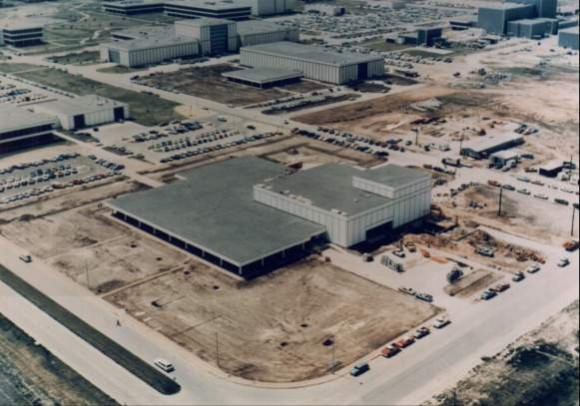
But then at one of the meetings in Washington to meet with advisors at NASA Headquarters, a scientist from the Public Health Service showed up and asked how NASA was going to protect against contamination of the Earth by lunar microorganisms.
McLane said the initial reaction by everyone else was, “What?”
For a couple of years a small group of scientists (which included a young and relatively unknown scientist named Carl Sagan) had been discussing the remote possibility that lunar samples brought back to Earth might contain deadly organisms that could destroy life on Earth. Even the spacecraft and the astronauts themselves could possibly bring back non-terrestrial organisms that could be harmful. Several governmental agencies, including the Department of Agriculture, the US Army, and the National Institute of Health got wind of this idea — and perhaps blew it a little out of proportion — and NASA was forced to take action to prevent a possible biological disaster.
“The ‘lunar bugs’ as we called them,” said McLane, “well, nobody really believed there was life on the Moon, especially something that might affect people – make them sick or kill off our civilization, that sort of thing.”
McLane said that the first time Deke Slayton, head astronaut at the time, heard about this, he just about “flew out the window.”
“He said, ‘No way is somebody going to step in and put these restraints on the program. It’s difficult enough to just fly to the moon without all these precautions about contamination.’ But NASA had meetings with the Surgeon General of the US, and he took the attitude, ‘How much is the Apollo program going to cost – $20 billion or so? I don’t think it is outlandish to set aside one percent of that to guard against great catastrophe on Earth.'”
“We said that we would take on the challenge of guarding against organisms, but the Surgeon General would have to justify it to the Congress, about the increased costs to the program,” McLane recalled. “And he did. So that got settled. We developed a scheme and it was approved. Everyone had to accept it, there wasn’t any choice.”
That changed the entire complexion of what McLane and his team had to accomplish before astronauts could go to the Moon. What started out a just a small clean room would now have to be a research lab, plus a quarantine facility. Plans for the facility grew to an 86,000 square foot structure that would cost over $9 million.
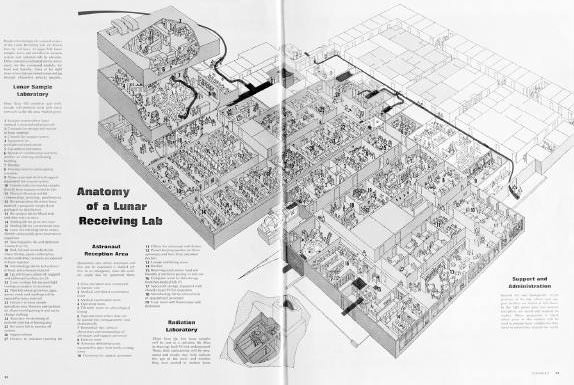
“We had to devise all the precautions,” said McLane, “as well as the facilities and procedures for quarantine of the astronauts, as well as accepting the samples and initiating tests on the rocks that had to be done quickly behind absolute biological barriers to test for any contamination before anything could be distributed to the scientific community. It was very interesting work.”
The LRL had accommodations for all the people and equipment that needed to be quarantined. “The astronauts were picked up in the ocean and they had to wear a special suit that was supposedly impervious to ‘lunar bugs,'” McLane said. “The astronauts were put into a modified Grumman Airstream trailer and delivered to Houston, trailer and all, waving at everyone through the windows, and talking to the president. They were taken to the Lunar Receiving Lab and placed in quarantine. It was comfortable in there, but the astronauts didn’t particularly like being in quarantine. We tried to limit the number of people who went into quarantine with them, but inevitably there were a few people– mostly ambitious secretaries and that sort of thing— who intentionally violated procedure and exposed themselves to the hypothetical lunar bugs and had move into the quarantine quarters.” The astronauts stayed in quarantine for three weeks.
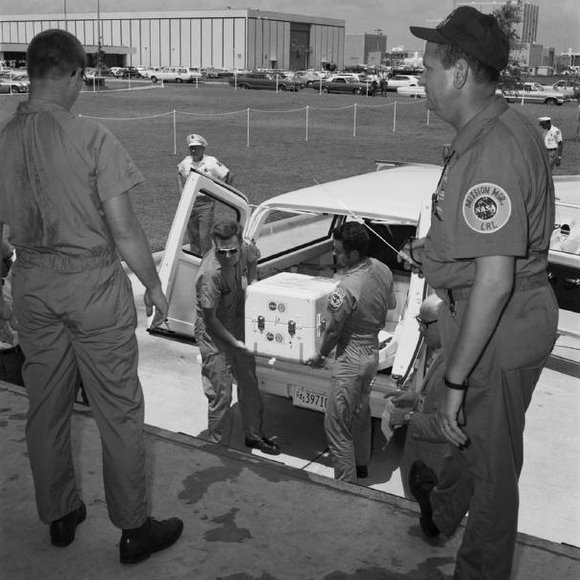
By the time Apollo 11 launched McLane had moved on to other projects. “My part of the organization was the engineering directorate, and I was only charged with determining the requirements for the facility and staffing the facility,” he said. “Once we reached the point where the design had come along and the staffing was pretty well up, leading the lab required someone with an interest in science as opposed to engineering.”
But he watched with interest as the first mission to the Moon unfolded. He even had a place in the Mission Control VIP viewing gallery for the launch, sitting just behind science-fiction writer Arthur C. Clarke.
Of course, it was determined that there were no “lunar bugs” and the quarantine requirement was dropped after Apollo 14. But the LRL safely stored, distributed and allowed for study of the lunar samples. In 1976 a portion of the samples were moved to Brooks Air Force Base in San Antonio, Texas for second-site storage.
The LRL building is currently occupied by NASA’s Life Sciences division. It contains biomedical and environment labs, and is used for experiments involving human adaptation to microgravity.
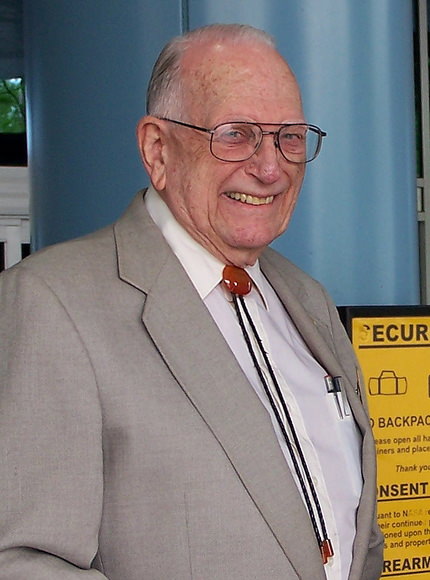
The lessons learned from creating the LRL will certainly be used in preparing for the first Mars sample return mission. Now, 86 years of age, will McLane offer any words of advice?
“The best that I hear now is that the techniques of isolation we used wouldn’t be adequate for a sample coming back from Mars,” he said, “so somebody else has a big job on their hands.”
McLane will be attending a special Apollo 11 celebration at Johnson Space Center – “just for the old timers,” he said.
For more information on the history of the Lunar Receiving Lab, see NASA’s “Lunar Receiving Laboratory Project History.”
Additional source: “Moon Rocks and Moon Germs: A History of NASA’s Lunar Receiving Laboratory,” Astronautics and Aeronauts, Winter 2001.

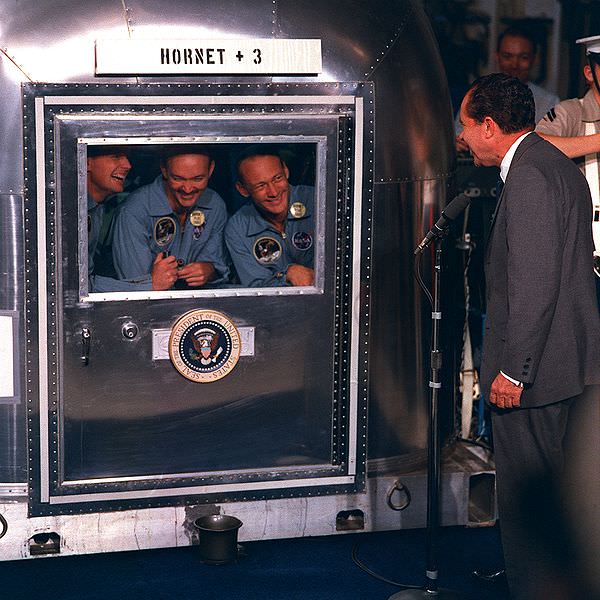
Of course I expected that even the mighty Sagan would be a dunderhead on some issues as are we all. I just didn’t think it would be on biology.
So organisms which are adapted for entirely different environments are supposed to survive, and even be competitive, on Earth? I think observation of evolution says quite the opposite.
But politics being politics, sure there will be another quarantine facility of sorts if we return samples from Mars. And as it turns out, it is probably beneficial for the samples anyway.
Torbjorn Larsson OM Says:
July 19th, 2009 at 1:25 pm
My thoughts exactly – any organism that is so highly specialised as to live in a niche environment on the Moon or Mars is highly unlikely to just happen to possess the ability to thrive on Earth, far less the ability to infect or harm humans or animals.
Still, I guess many unnecessary safeguards exist in scientific endeavours today to placate an easily excitable public, and a media that latches onto scare-tactics, doom and gloom at any opportunity for lack of anything else to say.
My father was involved in training the Apollo astronauts and had an experiment on the lunar surface that they carried out. As a geeky 12 year old, I accompanied my dad to the LRL some months after the return of Apollo XI.
The LRL interior was kept at a lower pressure than the ambient outside atmospheric pressure. Apparently, this was part of the containment plan if any bugs did breach the internal environment. The result was that when the doors to the LRL opened, one was literally blown inside.
Deep inside the LRL, I stood silently as my dad and another scientist discussed one particular moon rock about the size of a grapefruit. Unexpectedly, he turned to me and said “here, take a look” as he held out the moon rock and a loupe. Somewhat shocked, I carefully held the dusty gray rock in my hand and brought the loupe up to my eye.
I had no idea what I was supposed to be seeing through the loupe but that didn’t matter anyway. I was totally awestruck just holding that piece of the moon. Though I wasn’t cognizant of the price tag for that chunk of rock, I still treated it like it was grandma’s crystal.
Later, I ended up being a gofer for Pete Conrad and Al Bean during their training for Apollo XII. It started when I felt someone grab my shoulder. I turned and there was Pete Conrad. He said “go tell Beano we’re ready to go.”
Both my parents were former USN officers and my dad had a PhD. As a result, I was drilled in addressing people properly by title. While I went off in search of “Beano” I was perplexed about how I should address him. I sure couldn’t call him “Beano”. I considered Admiral Bean and Captain Bean but in the end just said “Mr. Bean, Mr. Conrad said to tell you that he’s ready to go” with all the formality that a 12 year old could muster.
I witnessed a few more Apollo training events over the next few years. One cold and windy day, Fred Haise, who was the Apollo XIII LM pilot, shared his sandwich with me as we ate lunch in a simulated crater to escape the wind. I’m eternally grateful for his consideration. As a kid in an adult environment I was used to being ignored so that was a really big deal for me.
Another time, I was sitting in a vehicle listening to the VHF radio as the astronauts rehearsed their lunar traverse. I forget which mission it was but it was the first time they used a golf caddy like device to carry their tools.
Over the radio I heard someone requesting a screwdriver. Apparently the tool cart had a problem and the training session ground to a halt. When no one responded to the call, I finally worked up the courage to pick up the mic and announced that I had a swiss army knife.
I was nervous as I walked up and presented my knife, with the screwdriver blade extended ,to someone involved in the training. It did the job and with typical NASA efficiency I even got my knife back.
The culminating moment of my experiences witnessing the Apollo program came when my dad took the entire family to the Cape to watch the Apollo XVII launch. Jack Schmitt, the LM pilot, had been to our home and worked with my dad which made it even more special for me.
As I sat on the top of the motor home my dad had rented for the occasion, I was disappointed to be three miles away from the launch pad. The brightly lit Saturn V looked so small in the distance. However, as soon as the main engines lit off, I wished I was a lot further away. The night became bright as day and the low frequency vibrations from the first stage buffeted me as I held on for dear life to the roof of the motor home.
Thanks dad for dragging me along and letting me bear witness to the grandest adventure in human history still.
@Hoku, sounds like you had a great time growing up, and especially meeting some NASA greats
Very interesting article and some nice comments!
I recently wrote a book about the recovery of Apollo 11 called Hornet Plus Three. I interviewed many members of the NASA and Navy recovery teams who were aboard ship. While the world *generally* felt there was little chance of hostile lunar pathogens even existing, the ship’s crew was very concerned!
They had just returned from a 7 month tour of duty off Vietnam. Their much-anticipated shore leave (vacation) was cancelled when the ship was notified it had been selected to recover this first lunar landing mission. The planning, training and actual recovery evolution was scheduled to add another 2 months to their absence from home. They had very mixed emotions initially, but participating in this epic adventure finally won the day.
Then, as they left Pearl Harbor on July 12 to perform the recovery, they were told about the “moon germ” issue as it might impact them. Once the three astronauts and the command module had been brought aboard, the NASA quarantine protocol contained a “plan B” option.
Had any member of the ship’s crew gotten unusually sick (flu-like symptoms, bad rash, etc), the entire ship and its crew would be quarantined at sea for 21 days – a sort of “Mobile LRL,” but without much in the way of home-like amenities.
The crew ferverently hoped that no moon germs dropped off the astronaut’s BIG suits or sloshed off Columbia as each of these came aboard the ship.